Greco-Roman Ranking Series: Zagreb Open Recap
Greco-Roman Ranking Series: Zagreb Open Recap
Tim Hands of Five Point Move breaks down the first UWW Greco-Roman rankings series event, The Zagreb Open.

Unlock this article, live events, and more with a subscription!
Already a subscriber? Log In
Tim Hands, founder and senior editor of Five Point Move, breaks down everything you need to know the Zagreb Open.
The United States Greco program entered the 2019 Grand Prix Zagreb Open, the first event of United World Wrestling’s vaunted “Ranking Series” this year, sporting a healthy amount of firepower.
11 National Team members -including stars like Kamal Bey, G’Angelo Hancock, Ildar Hafizov, and Dalton Roberts- figured to put the American squad in workable position to exit the weekend with several athletes sporting “Ranking Series” points. But as it turned out, the biggest showing came from one of the country’s most underrated- yet most dynamic young performers.
Xavier Johnson (63 kg) began his march to the Zagreb finals by positively starching Irakli Dzimistarishvili (GEO), received a forfeit in the quarters, and then pounded out a tech at the expense of Poland’s Dawid Ersetic. On a day that saw a group of US wrestlers drop winnable matches in disappointing fashion, Johnson’s surge to the gold medal round was akin to a beacon of light.
His final adversary, 2015 Junior World bronze Islomjon Bakhramov (UZB), was not someone Johnson might have been expected to beat. But he also wasn’t supposed to get past (let alone smash) Ersetic the way he did. So if you tuned into the finals feeling confident about Johnson’s chances, you were right to do so.
Bakhramov posed different problems compared to Johnson’s previous opposition, specifically when it came down to positioning. When Johnson went to a bodylock, his cascading go-to, Bakhramov instantly adjusted and landed on top before following with a gutwrench. Johnson did get credit for reversing; he had hip-heisted out of further danger. But just by the way, the sequence unfolded provided sufficient evidence that Johnson is still in the learning phase of his career.
When they returned standing, Bakhramov pummeled to a two-on-one and barred it hard enough to throw it by for a takedown. Once on the mat, he quickly capitalized with a gut. One more reset later it was over. Johnson, still ranging forward unafraid to engage, stepped right into a countering Bakhramov who easily came around back to score the match-ending points.
Johnson was the lone US finalist and earned 15 “Ranking Series” points by virtue of placing second. He was not the only medalist.
Hancock
2016 Junior World bronze Hancock found little trouble launching and pinning Abolfazi Seyedmahdavi (IRI) in his first bout, and the OTC resident athlete completed a well-wrestled match in the quarterfinals against a fellow former Junior World bronze, Lee Sey-Yeol (KOR), to set himself up for the weekend. It was just the semifinal when things went slightly south.
Hancock had already familiarized himself with 2016 University World silver Ilya Borisov (RUS). The pair had first met in Zagreb two years ago in what was a Borisov tech win. This time around, Hancock wanted to send a message. He pressured Borisov and got the first passive, but couldn’t seize the advantage. Back on the feet, and there was Borisov with a four-pointer.
Maybe there was a need to try and send a message -- or maybe it was because history has shown good things happen when Hancock gets to the body. But he didn’t quite have it this time. Hancock reeled Borisov in for a throw, and when he arched back, the Russian collapsed on top. A fall was called mere moments later, a surprising ending to what should have been a hotly-contested bout.
Hancock recovered in style, however. Deposited straight into the bronze match, he outhustled returning Zagreb champ Adam Varga of Hungary in each phase of the game. The most crucial sequence arrived in the second period. Up 1-0, Hancock was awarded the second passivity point of the match. Instead of going gut or popping for a lift, he chose to circle around for a front headlock. He clamped Varga tightly and took it over the top for two more. A step-out was the only point that went the Hungarian’s way. Other than that, Hancock earned his bronze with one of the cleanest matches of the tournament.
Other US Performances That Stood Out
John Stefanowicz (82 kg, Marines) didn’t finish in the money, as he is leaving Zagreb with a 1-2 record following a near-miss in the repechage. But what he did accomplish was sapping the life out of U23 World runner-up Rajbek Bisultanov (DEN) in his first match. Stefanowicz’s technique is now beginning to catch up to his pressure-based attack. If he keeps progressing like this, he’s going to be very tough to stop come the Trials and Final X Series.
Nick Boykin (97 kg, Sunkist) also went 1-2, and the two matches he lost (to Borisov and Varga) were lopsided. But it’s that first win over Kim Seung-Jun (KOR) why this was a solid weekend for him, and the US as a whole. Boykin is still new to this weight class, and although it meets his body type better than heavyweight did, the landscape requires an adjustment period. The way he chased down points against Kim, and the pin that closed it out, provided a confidence boost he could use going forward. Plus, a developing Boykin is necessary to rebuild the depth at 97 for the program.
Ildar Hafizov (60 kg, Army/WCAP) didn’t make the podium in Zagreb, and he only got two matches in: the first a beautifully dominant tech over Joszef Andrasi (HUN), and the second, a close loss to eventual bronze and hometown boy Ivan Lizatovic (CRO). With Hafizov, the more pressing matter leading up to the weekend was optics, i.e., ‘How’s he looking?’ He crushed it at the Schultz, sure, but this tournament carried a higher priority. The 31-year-old acquitted himself well. Hafizov’s movement, level-changes, and par terre checked the boxes necessary to suggest that he’ll once again find himself in prime position to make the World Team later this year.
Three General Takeaways Following Zagreb
3. When will Kamal Bey be allowed to actually wrestle?
For the third international tournament in a row, Bey was tormented by an Eastern European opponent who got away with tying up his wrists, forearms, and elbows without offering much back in the way of offense. This time the culprit was Rafael Yunusov (RUS), who made matters even worse by constantly coming in with his head. Post-match histrionics aside, the story here is that one of Greco’s most crowd-pleasing and explosive competitors is being stymied in each marquee event he enters nowadays. That is hardly a way to market, or even more importantly, save the sport.
2. The one reason why the “Ranking Series” in 2019 is already superior to last year.
And it has nothing to do with the World Championships. Putting Zagreb and the Hungarian Grand Prix back-to-back in the same month means a higher likelihood that many of the world’s best have the chance to compete against each other prior to September. In 2018, the events were spread out over the course of the season with Iran and Turkey (Takhti Cup and Vehbi Emre, respectively) five months apart. Getting two big events like Zagreb and Hungary out of the way earlier means a better chance of not only attracting talent, but also attention from fans.
1. It’s early, but not too early to tell that there’s work to do.
Par terre, long the US program’s Achilles’ heel, was responsible for a majority of the losses in Croatia. On the same token, there were also not enough scoring opportunities created from the feet. These are the two principal areas that will be responsible, in whichever way, for how the US performs at the World Championships in Kazakhstan and throughout qualification for the 2020 Olympics. There’s a lot of season left to go still, and with two impending foreign training camps on the horizon (three for some athletes), now is as good a time as any to begin shoring up these weaknesses.
Related Content
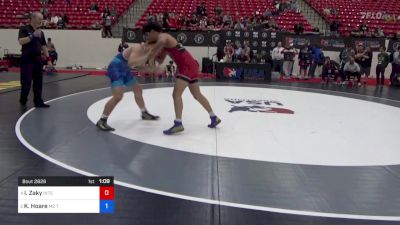 85 kg Final - Ibrahim Zaky, Integrity Wrestling Club vs Kendahl Hoare, M2 Training Center
85 kg Final - Ibrahim Zaky, Integrity Wrestling Club vs Kendahl Hoare, M2 Training CenterApr 27, 2024
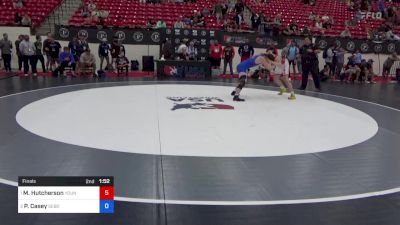 75 kg Final - Mario Hutcherson, Young Guns Wrestling Club vs Parker Casey, Sebolt Wrestling Academy
75 kg Final - Mario Hutcherson, Young Guns Wrestling Club vs Parker Casey, Sebolt Wrestling AcademyApr 27, 2024
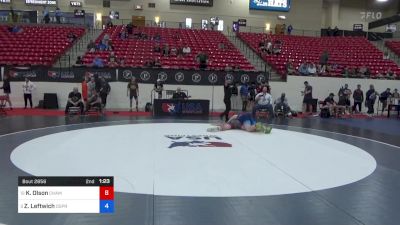 85 kg 7th Place - Kyler Olson, Champions Wrestling Club vs Zachary Leftwich, Osprey Wrestling Club
85 kg 7th Place - Kyler Olson, Champions Wrestling Club vs Zachary Leftwich, Osprey Wrestling ClubApr 27, 2024
 85 kg 3rd Place - Carson Langford, All-Phase Wrestling Club vs Isaac Barrientos, Izzy Style Wrestling
85 kg 3rd Place - Carson Langford, All-Phase Wrestling Club vs Isaac Barrientos, Izzy Style WrestlingApr 27, 2024
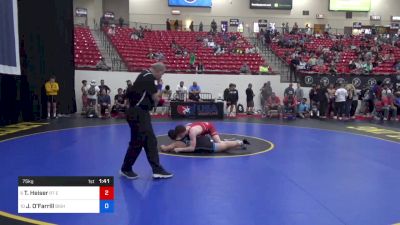 75 kg 3rd Place - Tomm Heiser, RT Elite Wrestling vs Jayden O'Farrill, Bishop McCort High School Wrestling
75 kg 3rd Place - Tomm Heiser, RT Elite Wrestling vs Jayden O'Farrill, Bishop McCort High School WrestlingApr 27, 2024
 75 kg 7th Place - Kash Dayley, Thorobred Wrestling Club vs Chris Anguiano, Dominator Wrestling Club
75 kg 7th Place - Kash Dayley, Thorobred Wrestling Club vs Chris Anguiano, Dominator Wrestling ClubApr 27, 2024
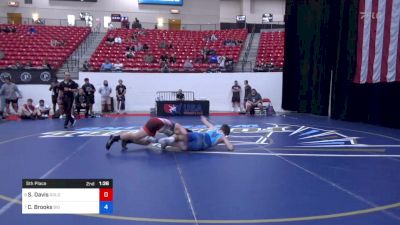 85 kg 5th Place - Satoshi Davis, Gold Rush Wrestling vs Caden Brooks, Big Cat Wrestling Club
85 kg 5th Place - Satoshi Davis, Gold Rush Wrestling vs Caden Brooks, Big Cat Wrestling ClubApr 27, 2024
 75 kg Cons Semis - Jayden O'Farrill, Bishop McCort High School Wrestling vs Shepard Stephens, Sanderson Wrestling Academy
75 kg Cons Semis - Jayden O'Farrill, Bishop McCort High School Wrestling vs Shepard Stephens, Sanderson Wrestling AcademyApr 27, 2024
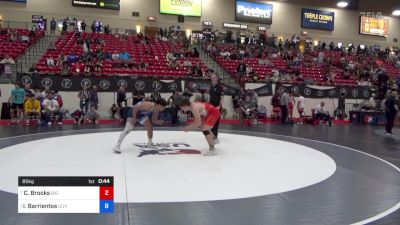 85 kg Cons Semis - Caden Brooks, Big Cat Wrestling Club vs Isaac Barrientos, Izzy Style Wrestling
85 kg Cons Semis - Caden Brooks, Big Cat Wrestling Club vs Isaac Barrientos, Izzy Style WrestlingApr 27, 2024